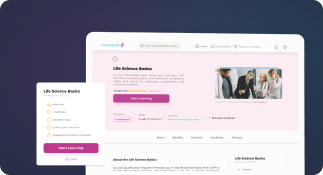Six Sigma White Belt Course
Definition
A Six Sigma White Belt course is an introductory training program designed to provide foundational knowledge of Six Sigma principles, tools, and methodologies. It is the entry-level certification in the Six Sigma hierarchy and is ideal for individuals new to quality management and process improvement, particularly in regulated industries like pharmaceuticals and life sciences.
Detailed Explanation
Six Sigma is a data-driven methodology used to eliminate defects and improve processes across industries. In the pharmaceutical and life sciences sectors, Six Sigma plays a critical role in enhancing quality control, reducing process variability, and ensuring regulatory compliance. The White Belt course introduces participants to the core concepts of Six Sigma without requiring deep statistical knowledge.
Purpose and Importance
The main purpose of a Six Sigma White Belt course is to build awareness of quality improvement practices and foster a culture of continuous improvement. For professionals in life sciences, this training helps align team members with industry best practices, regulatory expectations, and internal quality objectives.
Key benefits include:
- Understanding the basics of Six Sigma and Lean methodologies
- Learning how to identify waste and inefficiencies in processes
- Building a foundation for more advanced Six Sigma certifications (e.g., Yellow, Green, and Black Belts)
- Improving collaboration across departments by using a shared process improvement language
Course Content Overview
Typical topics covered in a Six Sigma White Belt course include:
- Introduction to Six Sigma and Lean principles
- Overview of DMAIC (Define, Measure, Analyze, Improve, Control)
- Roles and responsibilities in Six Sigma projects
- Basic tools for process mapping and data collection
- Case studies from life sciences and pharmaceutical settings
Application in Life Sciences and Pharmaceuticals
In regulated environments like pharmaceuticals and biotechnology, Six Sigma White Belt training is particularly valuable for:
- Quality Assurance (QA) and Quality Control (QC) teams
- Manufacturing and operations staff
- Regulatory affairs professionals
- R&D and clinical trial coordinators
For example, a White Belt-trained team member in a pharmaceutical manufacturing plant may help identify bottlenecks in batch release processes, contributing to faster time-to-market and improved compliance with FDA and EMA guidelines.
Choosing the Best Six Sigma White Belt Course
When selecting a Six Sigma White Belt course for your team, consider the following:
- Accreditation: Look for courses accredited by recognized bodies such as IASSC or ASQ.
- Industry relevance: Choose programs with examples and case studies tailored to life sciences or pharmaceutical applications.
- Delivery format: Options include online self-paced, live virtual, and in-person training.
- Certification: Ensure the course provides a certificate of completion or credential.
Related Terms
- DMAIC
- Lean Six Sigma
- GMP (Good Manufacturing Practice)
- Quality Management System (QMS)


